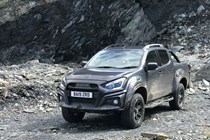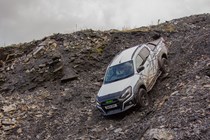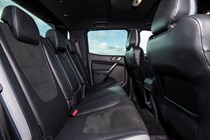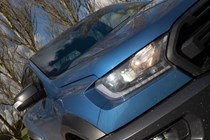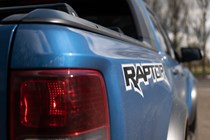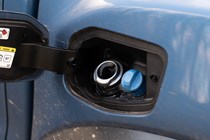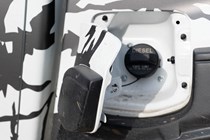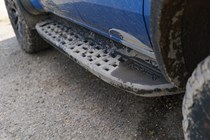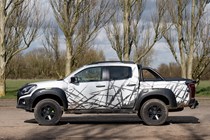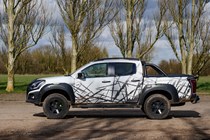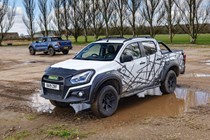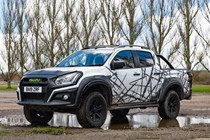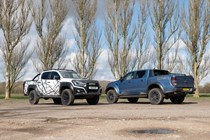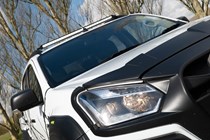We’ve pitted the Ford Ranger Raptor against the Isuzu D-Max XTR in a twin-test that takes the two most exciting lifestyle pickups on the UK market and hurls them at each other on-road and off. With both extensively modified to be exceptionally capable in the rough stuff, here’s how they fare in the real world.
Rarely do humble pickup drivers get to engage in a true battle of the giants, but the names ring out like cyberpunk warriors: Raptor, XTR – a duo that sound like they’d be perfect transportation choices in a post-apocalyptic world.
At least, that’s the theory – all well and good when the apocalypse is just a fantasy concept for adventure stories. As we’ve regrettably seen with the coronavirus, the real-world apocalypse is apparently more likely to be a lack of loo-roll, and absolutely no opportunity to reasonably drive vehicles, regardless of off-road prowess, wading depth or rugged cladding.
Almost needless to say, the testing and photography for this review was carried out before lockdown…
Pickups for extroverts
We have here different approaches to the same mindset. Double cab 4x4 pickups are already known for their appeal to those who put lifestyle ahead of sensible considerations like parking spaces or outright cargo capacity, and both the Ranger Raptor and D-Max XTR are styled and equipped to appeal to the playful, childish and ambitious side of our personalities.
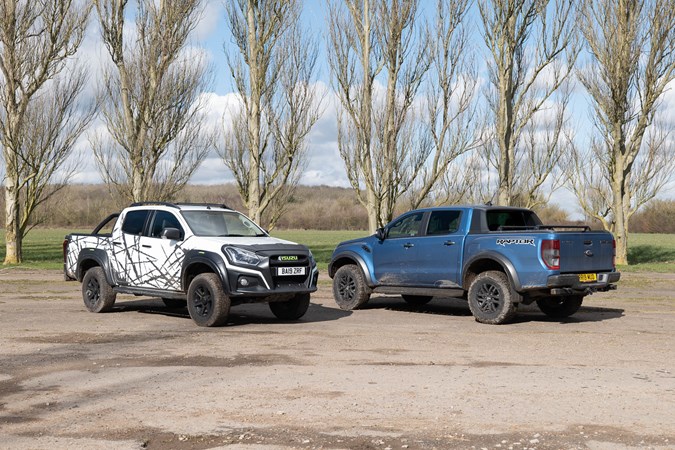
That’s not to say they’re all show and no go, though; unlike front-wheel drive wannabe SUVs, these two pickups look the way they do because almost every upgrade improves off-road performance.
Even the stickers on the XTR, which like the markings on a zebra, provide camouflage in thick undergrowth. Honest.
Round one: kerb appeal
> Ranger Raptor’s styled to impress from the start
> D-Max looks armoured, but needs options to shine
> Neither is subtle
Most drivers will rarely use the advanced off-road capability on offer in these high-end – and high riding – pickups, but it’s important that these trucks look the part and project that image.
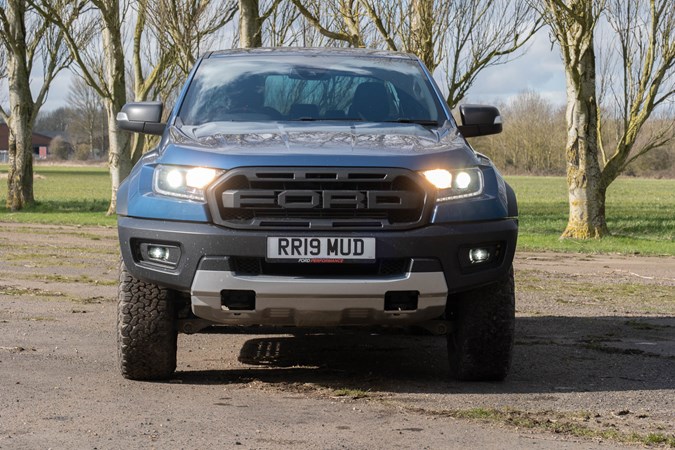
To that end, the Ford Ranger Raptor has wider front and rear wheel arches, a more rugged front bumper with ‘kinetic recovery’ attachments (tow hoops that can yank four tonnes without damage), solid side steps and Ford’s stylish aerodynamic sports bar and roll-top cover with roof-rack style accessory rails.
Almost all of the body modifications are functional. But as a bonus, no matter which colour you choose it looks imposing, and it shares a family look with the no-holds-barred Ford F-150 Raptor sold in the USA, which is one of the closest things the pickup world has to a supercar.
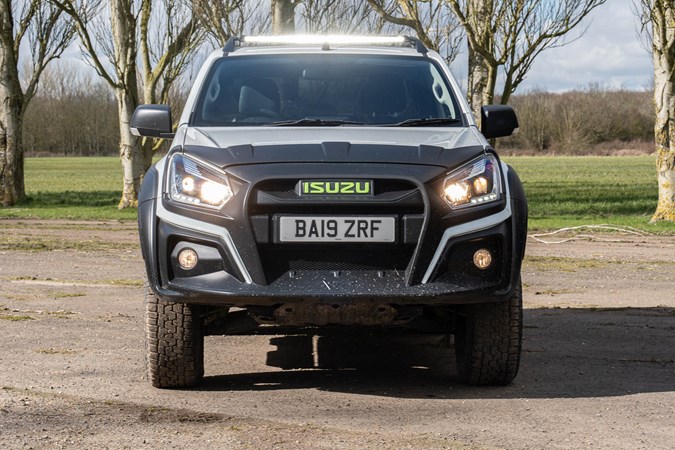
Isuzu’s modifications are less involved, but what it lacks in baked-in attitude it makes up for by going for the pickup equivalent of Cosplay. It’s part Borg, part truck, and resistance is futile – black plastic addons with almost glowing green highlights mean you can’t help but stare.
Like Star Trek’s cybernetic villains, the Isuzu D-Max is actually a mundane example of the species, augmented with some alien-green (but down-to-earth) technology, whereas the Ranger Raptor has evolved into a genetically superior, specialised beast that’s bigger, stronger and tougher, with very different suspension and sporty details throughout.
That evolution comes at the price of carrying capacity. From a practical standpoint the D-Max XTR has already won, as it can carry a tonne, tow 3,500Kg and weighs less, so it can legally do 70mph on dual carriageways.
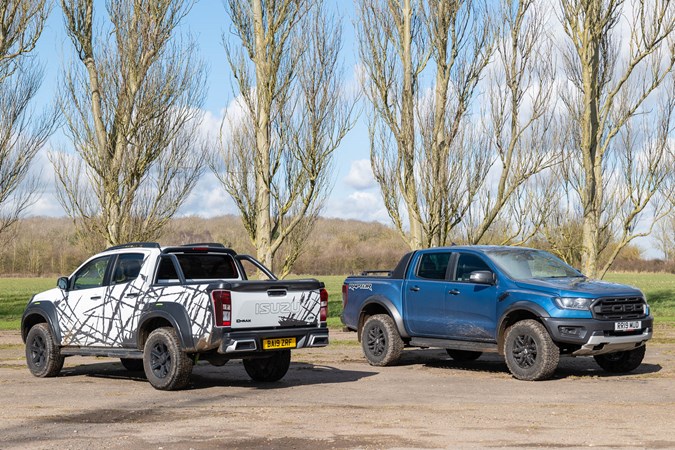
Winner: It’s a draw. While the Raptor’s got the polish, the XTR’s got the day-to-day practicality and all the in-your-face drama you could possibly need. Neither is for shy and retiring types
Round two: the driver’s seat
> Upgraded Ranger interior is car-like, comfortable and full of delightful bespoke details
> Isuzu’s rugged simplicity is robust, but at odds with some upgrades
> Comfort is very different between them
Climbing up into either the Raptor or the XTR is initially, thrilling – the extra ground clearance and robust side steps mean you feel like you’re taking control of some serious machinery, possibly the kind of thing you’d find in a quarry or exploring remote Amazon rainforests rather than nipping to Sainsbury’s for rainforest-friendly coffee.
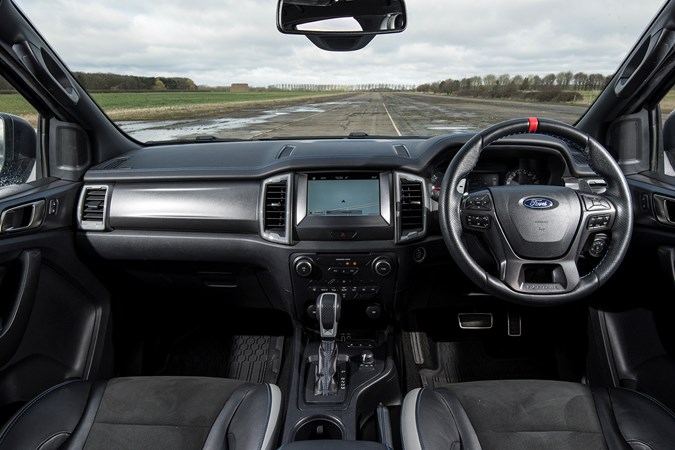
Still, it’s easy for Ford to make the best first impression, because the Ranger’s interior is already one of the best you’ll find in a European pickup. Raptor changes are similar to the tweaks you’d get in an RS version of a Ford car – grippy seats, a sports steering wheel with straight-ahead marker, racing-style graphics and more sports-focused dials. Plus some really special details, including steering-wheel-mounted magnesium paddleshifters for the gearbox.
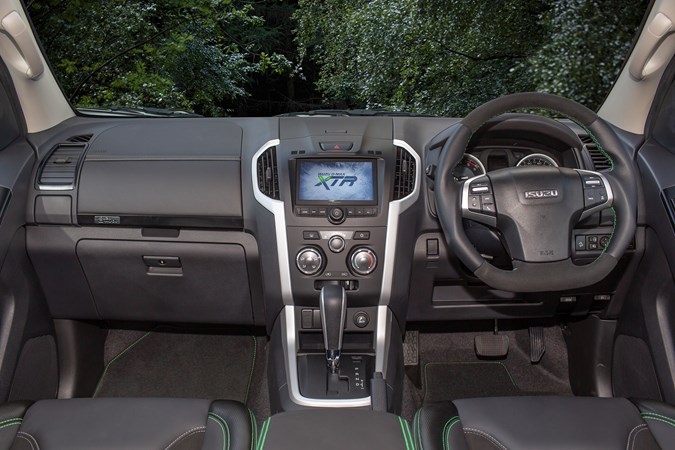
By contrast – and there’s a lot of contrast (most of it being bright green on black) – the XTR’s origins are humble, a hard-working D-Max Yukon with manual air conditioning. The D-shaped, part-suede steering wheel hugely looks out of place but is satisfying to hold, and the seats are equally grippy but offer no more adjustment than the standard items, being simply retrimmed with added heaters. If you spend the extra for the 9.2-inch Alpine touchscreen infotainment, though, it’s a pleasingly dramatic environment.
Once the showroom appeal has worn off, the Ranger Raptor’s cohesive, detailed upgrades and sophistication make it a much easier vehicle to live with, and that’s before you’ve considered the Ford’s general level of technology. Which is far beyond and way better integrated than what Isuzu is able to offer.

Rear passengers won’t be impressed either way – while the view out from so high up is great, the comfort is inferior to any five-seater car you could buy for the same money.
Winner: The Ranger Raptor leaps ahead
Round three: On-road
> Ranger Raptor’s comfort and manners are impeccable
> XTR is involving, and much better than a normal D-Max
> Kerb weight means the Raptor’s subject to lower speed limits
Spoiler alert – no, not the plastic lip on the back of the XTR, but the Ford Ranger Raptor’s on-road manners: you could skip this entire bit. The Raptor’s ridiculously good on-road, being vastly more comfortable than many cars, despite the very off-road focus of the modifications.
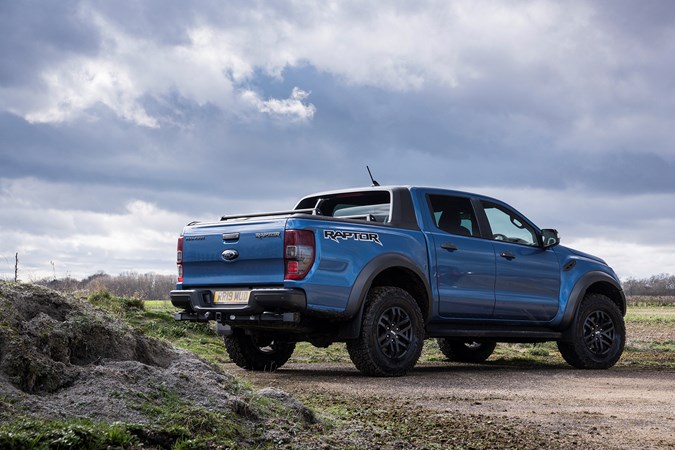
However, the D-Max still manages to makes a strong case for itself, so here’s how they differ.
Isuzu’s regular D-Max is built for hard work, not comfort. When creating the XTR, the modifications that allow it to handle rough roads and bigger bumps at higher speeds have the side effect of allowing small imperfections in a road surface to pass by much less noticeably, while the addition of anti-roll bars and altered front suspension geometry help it stay where it’s pointed and lean less into bends.
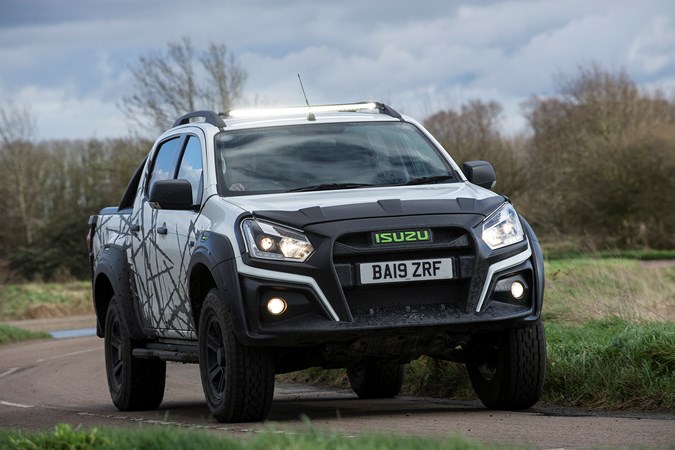
That means that it’s satisfyingly sharper to drive, but also more comfortable to be in than the Yukon it’s based on. The smaller steering wheel helps it feels more alert, but the suspension’s better overall and it shows. That said, when unladen, the back end can still skip about and when following it you can see how busy things are below the bumper.
D-Max XTR drivers don’t just benefit from the upgraded steering – that bodykit’s odd protrusions on the bonnet are perfect for aligning it with kerbs and obstacles on country roads, and getting your placement right for speedbumps. They’re intended for judging rocks and boulders, but kerbs and bollards are just as hazardous. Upgraded, sharper brakes and a lighter truck overall, and the fact it can legally do 60mph on A-roads, mean the XTR’s boy-racer attitude isn’t entirely misplaced – despite a lack of outright power.
We’ve avoided mentioning the Isuzu’s engine up to this point, because with its 1.9-litre turbodiesel producing just 164hp and 360Nm it seems a bit small for a vehicle this size. With the manual gearbox and the comparatively light weight of the D-Max, it’s not the handicap you might think.
But when it’s up against the Ranger Raptor’s 213hp and 500Nm from its 2.0-litre twin-turbo diesel, the Isuzu sounds completely inadequate. And it would be, if the Raptor were not almost half a tonne heavier. On the road, the XTR can keep up with the Raptor, but the driver’s working a lot harder and a lot more involved.
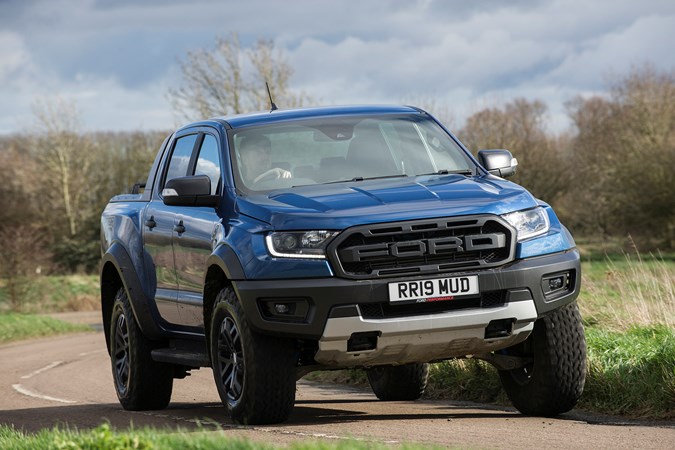
Cut to the Raptor driver, and they’re just chilling in that black half-leather cabin, with the ten-speed automatic box putting the 500Nm where it needs to be on demand, using as little effort as possible to keep going at other times. It feels – and it is – a much larger vehicle to drive, but it’s as easy as a Fiesta to handle otherwise. Just press the pedal and go. Anywhere.
The refinement (helped by active noise cancelling and, conversely, an artificial engine noise generator), comfort and ride quality of the Raptor is pretty much flawless for a pickup; it’s better than many SUVs, too, and the gearing means it can get off the mark quickly enough to cash the cheques that aggressive styling writes.
However, the weight of it combined with the commercial tax class means to stay legal, you’re going to be doing 50mph on most roads, and 60mph on dual carriageways. Frustrating, as it’s capable of far more. And being such an obvious-looking vehicle, it’s probably best not to risk it, either.
Which one is going to be best for you really depends on how you’re going to use the pickup and frankly, how likely you think you are to get caught if you drive it like a car. The Ranger Raptor is technically much, much better throughout here, though.
Winner: Raptor. Unless it’s a race on a dual carriageway, in which case the XTR can legally go 10mph faster…
Round four: Off-road
> XTR upgrades are essentially what serious off-roaders fit to their trucks
> But the Raptor’s closer to a purpose-built factory racing pickup
> Both are very capable, though suited to different terrain
Buying one of these and not taking it off-road is like getting a pack of Huskies for your penthouse apartment. It’s easy to understand why you’d want to own either the trucks or the dogs, though. Fortunately it’s easier to pay and play or go green-laning in Britain than it is to sled across the tundra, so enjoying the Raptor and XTR doing what they do best is fun and accessible.
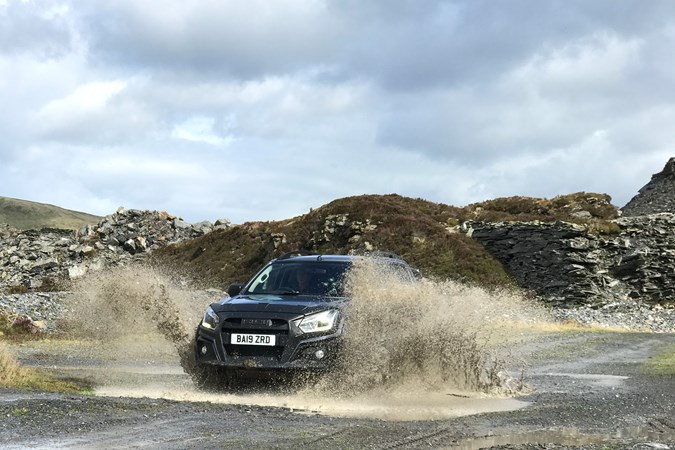
Of the two, the XTR’s the easiest to feel confident in; not because it’s superior as such, but because it’s easy to see out of, narrow and covered in hard-wearing protrusions that don’t look like they’d be any the worse after a few scratches and bumps. Authentic patina, if you will.
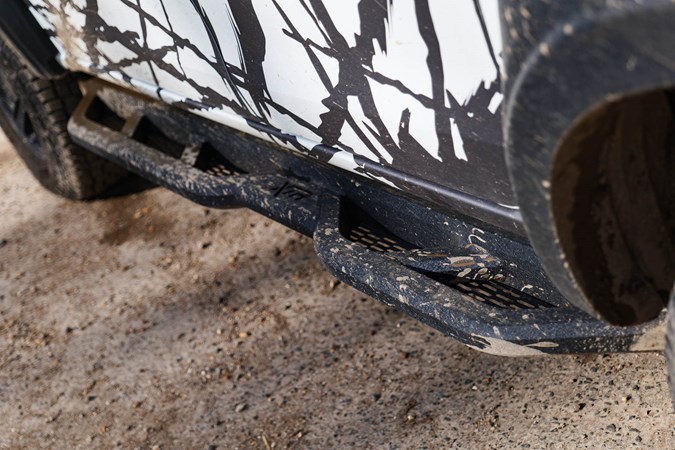
The side steps are tough as girders, and the suspension articulation plus grippy tyres allows the uprated D-Max to crawl or scramble about like a slightly ponderous goat on rocks, grass or sand alike. Hill-descent control works, everything’s just right and controllable.
The Ranger Raptor’s high list price (though they’re very close when VAT is included on the D-Max) and beautifully integrated arches mean it feels like a pristine piece of sporting equipment that you’re slightly afraid to get muddy or damaged. It also feels more remote from the driver’s seat – further away, less connected, though far from imprecise. Put this down the outstanding comfort levels available from the super-sophisticated Fox Racing suspension components.
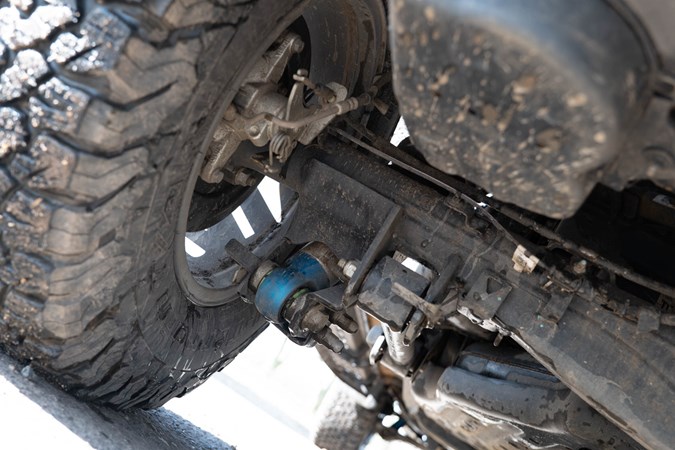
As such, if you bought it for the purpose and not the looks, the Range Raptor is immensely capable. Built for sustained high speeds off-road that would break the XTR or its driver (whichever gives up first), the Fox shock absorbers smooth out all but the worst cross-country bumps and are designed to absorb massive impacts and even jumps.
Everything’s reinforced and tuned for rapid progress on unpredictable surfaces and there are substantial, functional bash plates on the underside as well (an optional extra on the XTR).
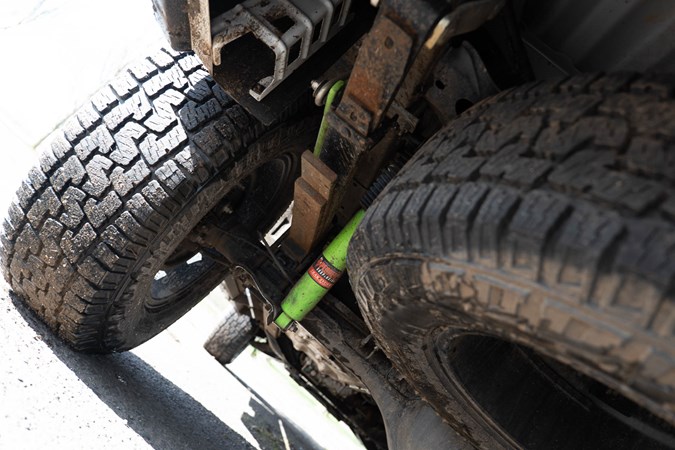
Ultimately both of these pickups are completely in their element off-road, and deeply competent. What suits you best may entirely be down to taste, or the kind of off-road driving you prefer. However, objectively, the Raptor’s better value for what you get, given the extensive level of modification and the unique components; even the chassis rails are bespoke.
Winner: Ford’s Ranger Raptor is more comfortable at speed, more purposeful, and easily as capable
Round five: At work
> Ranger Raptor isn’t a commercial vehicle for HMRC, but it is for type-approval
> D-Max XTR can carry and tow just as much as a regular D-Max
> Raptor tows less and carries far less than a standard Ranger
As a working vehicle, the D-Max XTR has the Raptor cornered. Not only can the Isuzu tow a full 3,500Kg and carry over 1,050Kg, compared to the Ford’s 2,500Kg and 560Kg (which has to include the people in the cab, don’t forget), being able to handle over a tonne of payload means it qualifies for all advantages of a commercial vehicle for tax, including cheap, fixed-rate benefit-in-kind (BIK).
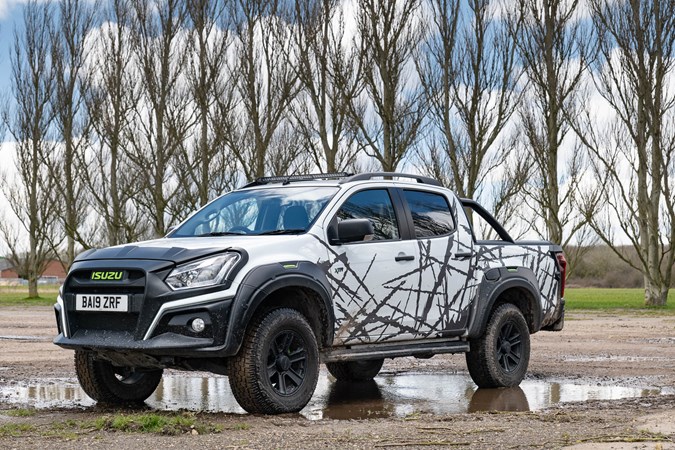
The Ranger Raptor definitely doesn’t qualify for fixed-rate BIK, and may not be considered a commercial vehicle for capital allowances either – that’s a bit of a grey area, thanks to the type approval. And that does, at least, reduce the road tax (VED) due, albeit at the cost of drop in the legal speed limits the Ford is able to drive.
Winner: The Isuzu D-Max XTR – it’s a real working vehicle upgraded for play
Ford Ranger Raptor vs Isuzu D-Max XTR – the final verdict
Our overall winner is the Ford Ranger Raptor. The thoroughness of the upgrades, the inherent refinement and polish of the Ford Ranger in the first place, and that exceptional engine and gearbox combination make the Raptor almost unbeatable, whatever you need a pickup like this for.
Although it’s outclassed for towing and practicality, the Ranger Raptor’s still has the advantage. Realistically neither of these pickups exists for sensible reasons, and there are cheaper, better options in either model line-up for real-world practical use.
If you want a great looking, seriously capable off-roader that’s also appealing on the road and comfortable for your family, the Raptor ticks all the boxes. In fact, we’d take one over a lot of cars we’ve driven recently.
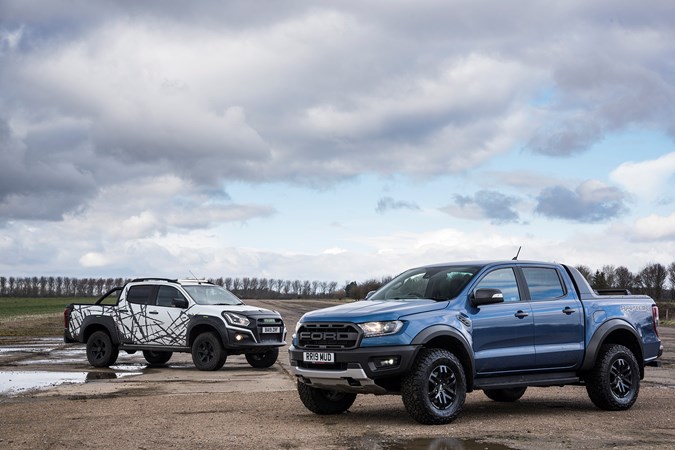
But, which is better for you?
The Isuzu D-Max XTR currently costs £34,004 plus VAT, as a commercial vehicle. To get a really banging spec, it’s nearer £40,000 before VAT – with Alpine infotainment system and subwoofer, top cover and LED light bar plus graphics, included. And because it still qualifies as a commercial vehicle, you may be able to take advantage of the ex-VAT pricing. With VAT, even the basic model is £40,804.
If you’re the sort of extroverted, full-on type who will find this reworked D-Max or the Raptor appealling, you’ll be glad that the Isuzu’s light weight keeps it on the right side of the law when you’re maxing-out the 1.9-litre engine at 70mph on dual carriageways.
The Ford Ranger Raptor currently costs £49,324 including VAT. It’s not a commercial vehicle, so VED reflects the high list price and inevitably harsh emissions – and you can’t claim the same costs back through your business. But it’s fully loaded spec-wise out of the box; you don’t need to add anything.
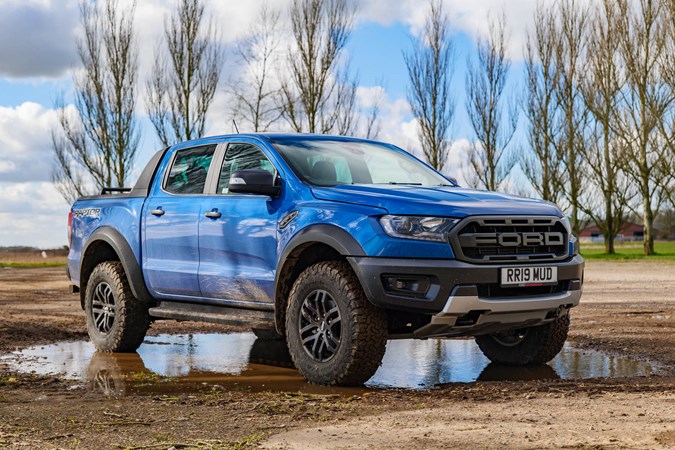
Monthly running costs will be much higher for the Raptor, given that it’s essentially a very heavy, tall car in the eyes of the tax office; which makes the times it’s subject to a 10mph lower speed limit even more frustrating. It’s comfortable at motorway limits, with plenty more on tap, and capable in bends – it would almost be better if it were entirely classed as a car.
High costs aside, it’s still a pretty safe bet. The legendary status and recognition of the name, plus the knowledge that it’s anything but a cheap Ranger model in fancy dress, will keep desirability and residuals high. It is an incredibly well-polished and desirable machine.
Also read:
>> Ford Ranger Raptor full review
>> Isuzu D-Max XTR full review
>> Sign-up for the Parkers Vans and Pickups newsletter
Just so you know, we may receive a commission or other compensation from the links on this website - read why you should trust us.





